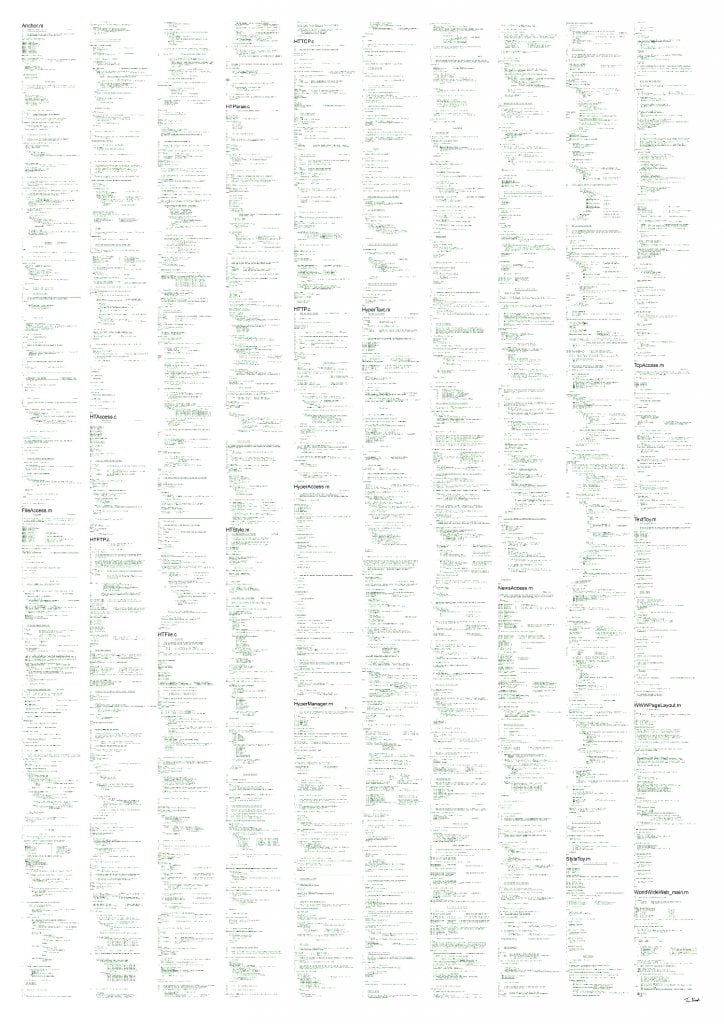Auctions
The Inventor of the World Wide Web Is Selling Its Original Source Code as an NFT at Sotheby’s
Bidding starts at just $1,000.

Bidding starts at just $1,000.

Caroline Goldstein

Sotheby’s London announced today that it will be auctioning off an NFT of the original source code for the World Wide Web, which, according to the house is the “first digital-born artifact to come to auction.”
Offered by British computer scientist and father of the World Wide Web himself, Tim Berners-Lee, the original time-stamped files containing the source code will be sold along with a more than 30-minute animated visualization, a letter Berners-Lee wrote about the process of creating the code, and a digital poster of the work featuring a graphic of Berners-Lee’s signature. The source code is approximately 9,555 lines and is written in languages Berners-Lee invented: HTML (Hypertext Markup Language), HTTP (Hypertext Transfer Protocol), and URIs (Uniform Resource Identifiers).
“NFTs, be they artworks or a digital artifact like this, are the latest playful creations in this realm, and the most appropriate means of ownership that exists,” Berners-Lee said in a statement. “They are the ideal way to package the origins behind the web.”

The autographed poster by Sir Tim Berners-Lee, auctioned as part of the NFT sale. Courtesy of Sotheby’s.
The lot will be sold in a standalone online auction titled “This Changed Everything,” from June 23 through 26, with bidding starting at the low low price of $1,000. If history is any indicator, the actual price will probably reach closer to seven or eight figures.
The sale comes on the heels of Sotheby’s “Natively Digital” auction, which fetched $17.1 million, with the majority coming from the sale of CryptoPunk 7523, an NFT that sold for $11.75 million (and quieted rumors that the market is in decline).
“Over the past several centuries humankind has seen a succession of paradigm shifts that have brought us forward into the modern era; Galileo’s proof of Heliocentricity, Gutenberg’s invention of the printing press, and Einstein’s Theory of Relativity to name but a few,” said Cassandra Hatton, the global head of Sotheby’s science and pop culture division, “but none has had the seismic impact on our daily lives as the creation of the World Wide Web.”
Berners-Lee was born into a family of computer scientists. His parents worked on the first commercially available digital computer for public use, and the early exposure to digital communication inspired the inventor’s creation. The “WorldWideWeb” was the first hypermedia browser, written by Berners-Lee using a NeXT computer designed by none other than Steve Jobs between 1985 and 1997, when he was forced out of Apple. Since then, Berners-Lee’s invention has spawned more than 1.7 billion websites used by some 4.6 billion people around the world. Berners-Lee’s original concept was to create a fully decentralized, open-access application that could be used by anyone, anywhere, a mission he is still working to fulfill as the CTO of Inrupt, a company that is seeking to give individuals total control over their data.
“I have never once felt I could relax and sit back,” Berners-Lee said in his statement, “as the web was and is constantly changing. It is not yet the best it can be: there is always work to be done!”